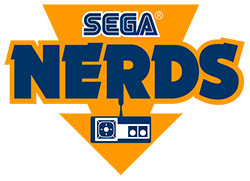
The video gaming industry has been a male-dominated sphere for quite some time. From shoot-em-ups to larger role playing games, the majority of lead characters have been male, with male-driven motivations driving the storyline forward. Sometimes in these types of games, females characters are either secondary, unimportant in the grand scheme of the narrative, overly sexualized, or merely serve as a plot device to galvanize and progress the main male character’s actions or motivations. This storytelling trope is closely aligned with this is colloquially known as “Women in Refrigerators.”
Clearly this is far from satisfactory, but why has the gaming industry always been so male-dominated? It would be hard to pinpoint every aspect of it, but one of the main variables has to do with the way in which certain products are marketed to specific genders. The same patterns can be seen in the way in which trucks and soldier toys are marketed to boys and dolls and Barbie’s are marketed to girls. In the case of gaming, however, marketing in this case is egregiously skewed. The total number of female protagonists in video games is only 9 percent, whereas the total number of female gamers is closer to 50 percent. It seems bizarre that video game creators would neglect such a large demographic of their target consumer base who would clearly react strongly to more playable female characters.
SEGA’s Heroines
While SEGA – and every other video game developer – still has a long way to come with regards to equal representation of characters in video games, they have contributed greatly to creating a number of strong, empowering female playable characters. While companies such as Nintendo solidified the damsel-in-distress paradigm with characters like Zelda in the Legend of Zelda, for example, SEGA was already latching on to the idea of strong heroines with Tyris Flare in Golden Axe. A strong heroine with a thirst for revenge, Tyris fights her way through the land of Yuria and goes on to defeat her arch nemesis, Death Adder. Of course her character isn’t completely without criticism. Her scantily clad attire was unnecessary and impractical to say the least; a bikini might look good, but it’s no substitute for armor, especially on epic quests filled with bloodthirsty beasts and monsters.
Other strong, female playable characters that SEGA have developed over the years include the ass-kicking Xiuying Hong in Shenmue II, Yumi Sawamura in Yakuza and Faye Lee in Binary Domain. The list goes on, but essentially what SEGA has done over the years has created a number of female characters who are not merely accessories for their male counterparts. Rather they’re strong, intelligent and inspirational characters, bastions of femininity that don’t rely on overused tropes and stereotypes, independent, fierce, and most of all, very playable.






